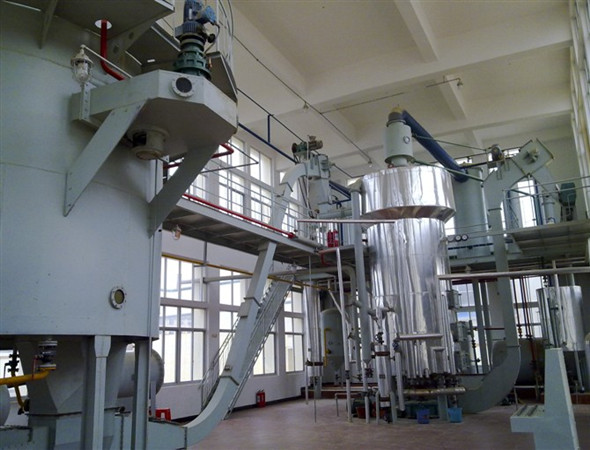The principle of leaching oil by leaching equipment is a process in which the oil in the oil is separated and extracted through the effects of wet penetration, molecular diffusion and convection diffusion by using the full contact between the solvent and the oil. The working process of leaching equipment is generally divided into four stages, namely: leaching stage, wet meal desolventization stage, mixed oil evaporation and stripping stage, and solvent recovery stage. Let's take the commonly used flat-rotating leaching device as an example, let's take a look at how the leaching equipment works.

1. Leaching; the pre-processed oil or pre-pressed cake is sent to the leaching workshop by the horizontal scraper conveyor, enters the storage box, and then uses the buried scraper conveyor to the auger, and then enters the horizontal leaching device for leaching . The fresh solvent is pumped from the circulating solvent tank to the indirect large spray, and the solvent is sprayed indirectly to contact the material and leached by the circulating pump. Use a tent filter to filter the mixed oil.
2. Desolubilization of the wet meal (drying); after the grease is leached, the wet meal containing a small amount of solvent is sent to the enclosed auger by a buried scraper conveyor, and then enters the dryer for desolvation, and the dried meal after desolvation is conveyed by a conveyor Send to the finished meal warehouse.
3. Mixed oil evaporation and stripping system; the mixed oil filtered by the tent filter in the extractor is sent to the filter above the leveler by the mixed oil pump, and the second filtered mixed oil is sent to the mixed oil tank. The mixed oil that meets the required concentration enters the first and second long tube evaporators, and then enters the layer-dish stripping tower for stripping after evaporation. The leached crude oil flows into the crude oil tank from the bottom of the tower, and then is pumped to the refining workshop.
4. Solvent recovery: The solvent evaporated from the mixed oil through the first and second long tube evaporators flows into the solvent circulation tank after cooling, and the free gas from the flat-rotating extractor flows into the circulation tank after cooling. The mixture of the solvent and steam condensed water from the dryer, the layer-dish stripper, the free gas condensate water flows into the water distribution tank. In the water distribution tank, after the solvent is separated from the water, the solvent enters the circulation tank, and the waste water is discharged through the water sealing tank.
The air enters the extractor with the feed, and enters the entire extraction equipment system to mix with the solvent vapor. This part of the air cannot be condensed into liquid, so it is called "free gas". The free gas from the extractor, water distribution tank, mixed oil tank, condenser, and solvent circulation tank is all collected in the air balance tank, and then enters the final condenser. After the solvent contained in the free gas is partially condensed and recovered, there is still uncondensed gas (tail gas), which still contains a small amount of solvent. The following three methods can be used for recovery and then discharged into the atmosphere.
①Return of the absorption tower: free gas enters the absorption tower with packing, cool water is added from top to bottom of the tower, the solvent in the tail gas is absorbed again, the liquid enters the water separation tank for separation, and the tail gas is discharged into the atmosphere through the flame retarder.
②Recovery by refrigeration method: The tail gas from the condensation of free gas is condensed and recovered by low-temperature treatment. The recovered liquid enters the water distribution tank, and the tail gas is discharged into the atmosphere by the fan.
③ Paraffin oil absorption method: Free gas enters the bottom of the absorption tower and passes through the packing layer in the tower. The solvent in the gas is absorbed by the liquid paraffin sprayed from the top of the tower. The gas after absorption, exchange and desolventization is exhausted to the atmosphere by a fan. After absorbing the solvent, the paraffin oil mixture goes to the preheater for heating, and then to the desorption tower, where it is desorbed and desolvated by direct steam. The mixed gas after analysis is decondensed again for separation. After the parsed paraffin is cooled by the cooler, it is redistributed to the absorption tower to become a fresh paraffin absorption liquid, and the cycle works like this.
Copyright © Henan Zhongxing Grain And Oil Machinery Co.,Ltd. All Rights Reserved. Powered by MetInfo